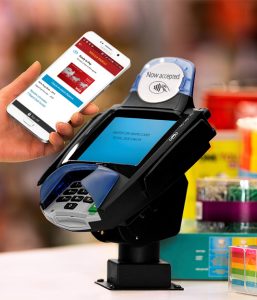For mobile-wallet providers, card issuers, and merchants trying to attract consumers to their mobile-payment services, the way to build a base of active customers can be summarized in two words: pay up.
New findings from Auriemma Consulting Group based on research with 1,505 payment card holders eligible for mobile-payments programs show that transaction-based incentives are effective in building the frequency of mobile transactions and dollars spent.
“The big takeaway this time is that those that have received an incentive at some time are much more likely to become habitual users,” Jaclyn Holmes, director of payment insights at New York City-based ACG, tells Digital Transactions News. “We’re still in an early stage of adoption, but incentives have pushed some users to make it much more of a habit.”
While that may seem obvious, the general-purpose mobile wallets such as Apple Pay, Android Pay, and Samsung Pay so far have failed to get much adoption beyond a small core of enthusiastic users since their debuts in 2014 and 2015. Some retailer-backed mobile wallets that provide fairly easily attainable rewards, however, notably those from Starbucks Corp. and Dunkin’ Brands Inc., have been hits with customers.
The study, conducted online by an independent field-service provider for ACG in November followed by in-depth interviews with some of the respondents in December, found that 25% of consumers with a smart phone that could support mobile payments did use mobile pay
Of those consumers, 32% recalled receiving a mobile-pay incentive, up from 19% a year earlier. And 86% of those who got an offer reported actually claiming it, either at the point of sale or in-app.
Over a one-week period, those who received an incentive to use mobile pay in-store did so 4.6 times on average compared with 3.1 times for those who didn’t receive one. The same was true for in-app purchases, with those receiving incentives making four in-app purchases compared with 2.4 purchases for those who didn’t.
The study also examined who provided the incentives. Card-issuing banks formerly provided most, but recently banks’ share had dropped to 40% from 58% earlier. Merchant-funded rewards are now the most common, at 46% of all offers.
Issuer-funded rewards were “much more prevalent in the early days of mobile pay,” says Holmes. “Now they [are] coming from the pay service itself, or they’re tied to the merchant. They’re much more retailer-oriented.”
Regardless of who offered the reward, 78% of respondents reported that their offer was linked to a specific merchant.






